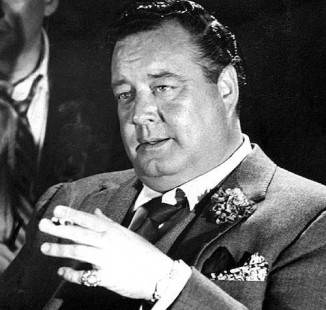2,772 years ago today, the Neo Babylonian king Nabonassar assumed the throne of the great city, which isn’t necessarily good news in itself, but 747 BCE is a date of tremendous importance, since it allowed the scientist and historian Claudius Ptolemy (100-175 CE) to provide for modern scholars a fixed date in history on which our conceptions of ancient years can be made accurate. The reason for this is that astronomers were able to prove claims of celestial phenomena like eclipses in an extant work from the time period called the Babylonian Chronicles. Combined with Ptolemy’s work Almagest, dates line up, and give us today an accurate way of counting backwards in time. READ more… (747 BCE)

To reiterate, 747 BCE is a starting point for counting forward and backward in time because we know a lunar eclipse occurred on February 6th, 747 BCE, which is the same year that Ptolemy records that Nabonassar became king. The Babylonians themselves were counting totally different numbers; they had their own established chronology.
This chronology of Ptolemy and Nabonassar is called the Canon of Kings, and while being true to our measurements, it’s not the only true chronology historians and scientists can use while trying to record the past. For example, the Canon only records whole years, so small holes exist when the throne of Babylon was held by an imposter, or by a king who reigned for less than 365 days.
The Canon of Kings was used by Ptolemy in Almagest to date the reigns of Babylon, the Achaemenid Persian Empire, the Hellenistic period, the Ptolemeic (no relation) Dynasty of Egypt, and the Roman Emperors until Antoninus Pius. Because the Canon lists the end of one king’s reign as one year before the reign of his successor, there is a time gap that historians today can try and granularize by using the dates of celestial events, primary sources, minted coins, and other evidence.
MORE Good News on this Date:
- The Grand Teton National Park was created (1929)
- Singer-songwriter Michael Bolton, who sold more than 75 million records—including two No.1 pop ballads (How Am I Supposed to Live Without You) and 8 albums on the top 10 charts (Time, Love & Tenderness)—was born in Connecticut (1953)
- United Nations proclaimed the vernal equinox as Earth Day (1971)
- The Church of England voted for the ordination of women priests (1987)
- Free Nicaraguan elections toppled the Sandinistas (1990)
- The US lifted a 23-year ban on travel to Libya (2004)
- Egypt‘s President Mubarak ordered multi-candidate elections to be legal (2005)
196 years ago today, Levi Strauss was born in what was then the Kingdom of Bavaria. Moving to Louisville Kentucky in the 1850s, and then to San Francisco in 1871, Levi Strauss began importing all kinds of goods from the East Coast, including tents, and eventually jeans. Strauss met Jacob Davis doing this work, and together the men patented riveted jeans. It’s a heck of an American story that the men most responsible for the most American piece of clothing are a Bavarian immigrant and a Latvian immigrant.

After one of Davis’s customers kept purchasing cloth to reinforce torn pants, he had an idea to use copper rivets to reinforce the points of strain, such as on the pocket corners and at the base of the button fly. Davis did not have the money needed to purchase a patent, so he wrote to Strauss suggesting that they go into business together.
The patented rivet was later incorporated into the company’s jean design and advertisements. Contrary to an advertising campaign suggesting that Levi Strauss sold his first jeans to gold miners during the California Gold Rush (which peaked in 1849), the manufacturing of denim overalls only began in the 1870s.
From a company with 15 salespeople, two plants, and almost no business east of the Mississippi in 1946, the organization grew over 30 years to include a sales force of more than 22,000, with 50 plants and offices in 35 countries. (1829)
93 years ago today, Johnny Cash was born. The American singer-songwriter, guitarist, and author was widely considered one of the most influential musicians of the 20th century and one of the best-selling music artists of all time, having sold more than 90 million records worldwide. Although primarily remembered as a country music icon, his genre-spanning songs embraced rock and roll, rockabilly, blues, folk, and gospel. This crossover appeal won Cash a rare honor: multiple inductions in the Country Music, Rock and Roll, and Gospel Music Halls of Fame.

Known for his calm, deep bass-baritone voice, his rebelliousness, and free prison concerts, his trademark look later earned him the nickname “The Man in Black.” He traditionally began his concerts with the simple “Hello, I’m Johnny Cash,” and featured his signature songs, I Walk the Line, Folsom Prison Blues, Ring of Fire, and A Boy Named Sue.
Like all the best artists, it’s difficult to nail Cash’s colors to a mast, as even into his later life, he collaborated with musicians far beyond his spectrum, such as Nine Inch Nails. He maintained the unique ability to nurture and defend artists, such as Bob Dylan, on the fringes of what was acceptable in country music even while serving as the country music establishment’s most visible symbol. It’s also difficult to try to summarize Cash’s impact and legacy, so in closing, his story was portrayed in the Oscar-winning biopic Walk the Line, and as the inspiration for the woundingly-hilarious Walk Hard: The Dewy Cox Story. Cash’s “Man in Black” persona also led to the naming of an all-black species of tarantula: Aphonopelma johnnycashi.
In this British-produced concert-doc of Cash’s time in San Quentin, the director compares Cash to the heroic, yet simple homesteader/cowboy/gunslinger of Western films in an attempt to explain his incredible popularity. WATCH Cash perform in San Quentin Prison… (1932)
34 years ago today, Tim Berners-Lee, who invented the World Wide Web, introduced the first useful web browser. It was released first to a group of physicists, but soon it spread to geeks using computers around the world.

Renamed Nexus, it was the first program to use both FTP (file transfer protocol) and HTTP (hypertext transfer protocol), another Berners-Lee invention. HTTP simplified the linkup between you and server, making the transfer of text and images a seamless process—and the web took off. The source code was released into the public domain on in 1993, after Mosaic became a popular alternative. (1991)
His company, Inrupt.com, allows the data to be stored in ‘pods’ and the user can then give access to any company they like. He came up with ‘Solid,’ the open-sourced web-based system while teaching at MIT. Inrupt’s new customers include large corporations and government entities, like the BBC—which will use it to deliver services to viewers—and Britain’s National Health System which is putting health data into pods “so that when someone shows up at a hospital, all their health history will show up with them.”

55 years ago today, National Public Radio was founded in the US—established by an act of Congress—as a nonprofit media network, so producers can focus on creating quality news and entertainment, rather than making money. Publicly and privately funded through universities, memberships, and donations, NPR serves 1,000 public radio stations today. Broadcaster Susan Stamberg was the first woman to anchor a national nightly news program in America, co-hosting All Things Considered, one of the most popular radio programs in the country. (1970)

106 years ago today, the Grand Canyon was proclaimed a National Park by the US Congress. The steep-sided mile-deep canyon carved by the Colorado River in Arizona was first visited in 1903 by President Theodore Roosevelt who became a major proponent of its preservation. Opponents such as land and mining claim holders blocked the efforts for 11 years, but the Grand Canyon—277 miles long (446 km), and 18 miles wide (29 km)—was finally established as the 17th US National Park. For 12,000 years, the area has been continuously inhabited by the Native American Pueblo people who consider this a holy site. WATCH a video that takes you down in the canyon… (1919)
Also, 107 years ago today, Jackie Gleason–the comedian, actor, and musician whose style and characters grew out of his childhood in Brooklyn, New York–was born. He was known for his brash, physical comedy style, exemplified by his character Ralph Kramden in the beloved television series The Honeymooners.
 He was 8 when his father left the family and 19 when his mother died, but he soon was earning money in pool halls and on stage as an entertainer. His self-produced TV variety show, The Jackie Gleason Show, earned the second-highest ratings in America in 1954-1955. Among his notable film roles were Minnesota Fats in the Academy Award-winning 1961 drama The Hustler (co-starring with Paul Newman), and Buford T. Justice in the Smokey and the Bandit series.
He was 8 when his father left the family and 19 when his mother died, but he soon was earning money in pool halls and on stage as an entertainer. His self-produced TV variety show, The Jackie Gleason Show, earned the second-highest ratings in America in 1954-1955. Among his notable film roles were Minnesota Fats in the Academy Award-winning 1961 drama The Hustler (co-starring with Paul Newman), and Buford T. Justice in the Smokey and the Bandit series.
Gleason was an amateur musician who produced more than a dozen romantic best-selling “mood music” LPs. The band leader for several of them, Bobby Hackett, said, “Jackie knows a lot more about music than people give him credit for. I have seen him conduct a 60-piece orchestra and detect one discordant note in the brass section. He would immediately stop the music and locate the wrong note. It always amazed the professional musicians how a guy who technically did not know one note from another could do that. And he was never wrong.” Nearly all of Gleason’s albums are still available and have been re-released on compact disks. Watch a tribute from ABC News following his death in 1987 at age 71… (1916)
Share the Music, Memories, and Milestones…



















